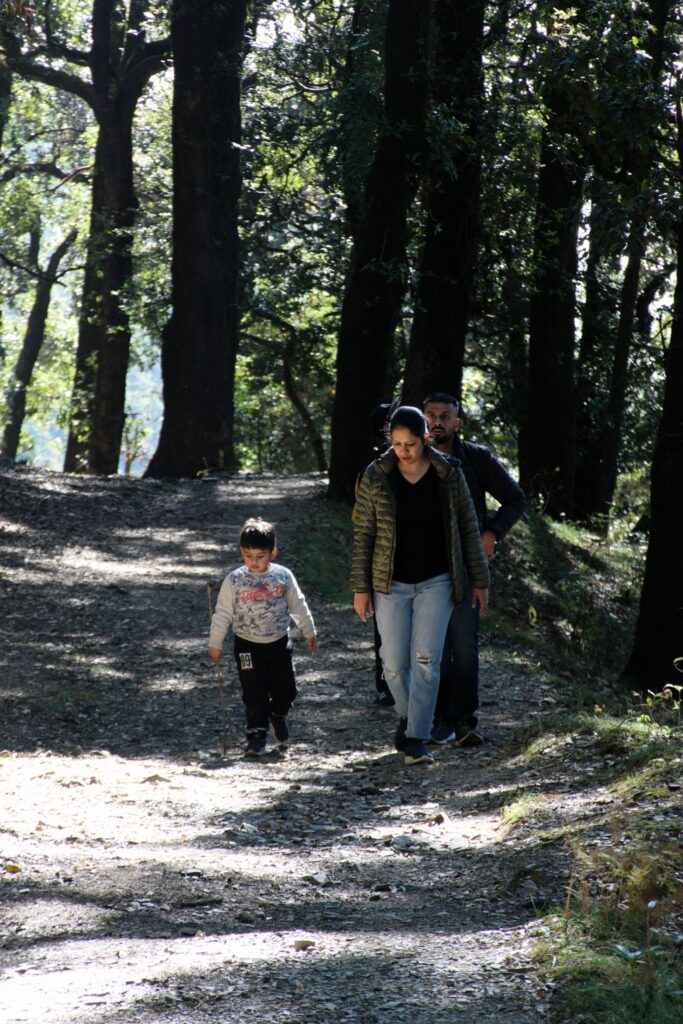Nurturing Young Minds: The Transformative Power of Educational Hikes
In the gentle embrace of nature, young hearts and curious minds find a canvas to paint their dreams upon. At Travelling Baromasa, we recently had the immense pleasure of embarking on an educational hike with a vibrant group of school children, ranging from grade 1 to grade 8. As the sun kissed the emerald leaves and the melodies of the forest whispered ancient secrets, we witnessed not just a hike, but an enriching tapestry of learning and joy unfold before us. The Symphony of Discovery: Hiking, beyond its physical benefits, weaves a profound tapestry of knowledge and character. For young souls, it is not just a walk amidst trees and streams; it is a journey into the heart of education itself. Nature, the finest teacher, unfurls its scrolls of wisdom in myriad ways. The rustle of leaves becomes a sonnet of biology; the flight of a bird, a lesson in physics; the patterns in flowers, an artistry of mathematics. Every step, every encounter, is a chapter waiting to be explored. Ethics and Empathy: In the heart of the wilderness, ethics are not just taught; they are felt. Respect for nature, understanding the delicate balance of ecosystems, and the importance of conservation aren’t mere concepts but living, breathing lessons. As young eyes marvel at the intricacies of a spider’s web or the resilience of a sapling, empathy takes root. The jungle becomes a mirror, reflecting back the values of responsibility, kindness, and stewardship. Character Forged in Nature’s Crucible: Educational hikes, like the one we experienced, are not just a part of education; they are education in its purest form. As young explorers navigate trails, overcome obstacles, and work in harmony with their peers, virtues of teamwork, patience, and perseverance are etched into their character. They learn not only to adapt to nature’s challenges but also to respect its wonders. Beyond Books and Classrooms: The classroom has its own charm, but nature’s classroom is unparalleled. Here, the senses are awakened, and the spirit is rejuvenated. The monotony of textbooks is replaced by the vibrant hues of flowers, the melodious chirping of birds, and the earthy aroma of the forest floor. Theories become tangible; knowledge becomes a living, breathing entity. Why Every Child Needs an Educational Hike: Incorporating hikes into a child’s curriculum isn’t just an addition; it’s an essential foundation. These journeys foster a lifelong love for nature, laying the groundwork for environmentally conscious adults. They nurture curiosity, fuel creativity, and instill a deep-seated respect for all life forms. Most importantly, they create memories that last a lifetime, memories where the rustle of leaves and the scent of wildflowers become the backdrop of a child’s educational odyssey. At Traveling Baromasa, we believe that every child deserves the transformative embrace of nature. Through educational hikes, we not only teach them about the world but also about themselves. We nurture their spirits, allowing them to flourish amidst the wilderness. As they return from these adventures, their smiles carry the imprint of nature’s lessons, their hearts echo with the songs of birds, and their minds are enriched with the knowledge that education isn’t confined within four walls—it spans the boundless horizons of the natural world. In the footsteps of these young explorers, we find hope. Hope for a future where every child, like the leaves in the wind, dances freely and learns deeply, guided by the wisdom of the forests and the endless possibilities of the world around them. Let us, as guardians of this Earth, ensure that the path to education is not just a road but a trail that winds through the heart of nature, leading our children toward a future where they are not just learners but stewards of our precious planet.
Nurturing Young Minds: The Transformative Power of Educational Hikes Read More »






